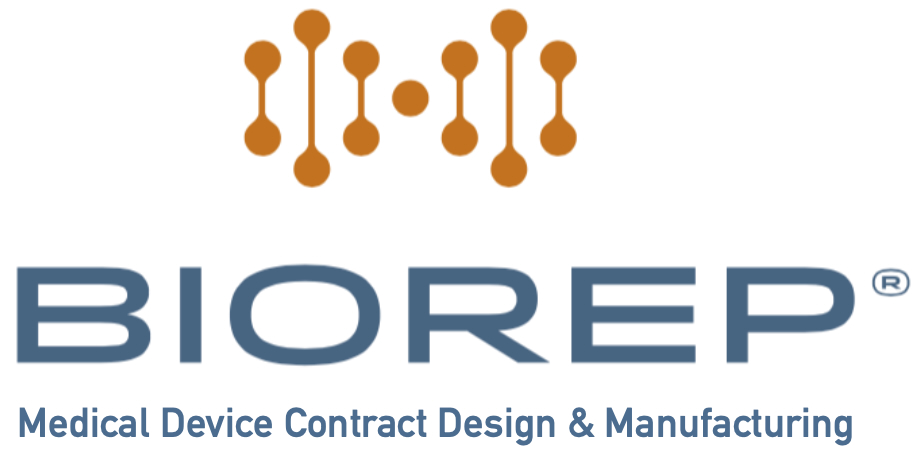PICTURE THIS
Your team has been working tirelessly to develop a novel medical device that feels ready to go. Hours of work have been poured in, dozens of tests, thousands of dollars, and it’s working just as intended. As your team is reading up on the standards for your device it becomes evident that the cleaning process needs to be validated, the sterilization process needs to be validated, and even the packaging needs to be validated. The Food and Drug Administration (FDA) requires all these validations to be conducted prior to product release. Now you realize that only half the battle has been overcome. The device might have passed all its functional verifications and design validation tests, but that’s only a drop in the bucket. It’s clear that the sooner these validations are considered, the better, as they can quickly become overwhelming (and expensive!). But you might be asking yourself some questions now like what do these validations entail? Or what are my options?
WHAT IS A CLEANING VALIDATION?
A cleaning validation is the process of establishing evidence that an inline cleaning processes removes manufacturing residuals which have accumulated on device components during the manufacturing process, preventing product contamination and meeting regulatory requirements. When done correctly, cleaning validation provides confidence that cleaning procedures are adequate to prevent product contamination and the finished device will pass all ISO 10993 biocompatibility testing requirements. While most product designers will design their products with biocompatible materials in mind to ensure their product will pass all biocompatibility testing, ISO 10993 usually requires testing of a fully completed device. This is necessary to ensure materials have not been contaminated with potential irritants or toxins during the manufacturing process such as machining oils, mold release agents, or even bioburden from component handling.
Adequate cleaning procedures play an important role in preventing contamination and cross-contamination. Cleaning validations should lend themselves to SOP creation detailing the cleaning process and equipment needed. Critical in maintaining the integrity of the cleaning validation is maintaining control of suppliers, raw materials, and even water sources.
WHAT IS A STERILIZATION VALIDATION?
One of the highest risks involving medical devices is ensuring sterility. A sterilization validation test confirms the sterilization process can maintain the appropriate Sterility Assurance Level (SAL) of the medical device overtime. For devices that must be sterilized before use, the appropriate sterilization cycle parameters must be determined through a validation process. Since all products have unique designs, material densities, and packaging configurations, sterilization conditions that are sufficient and appropriate for one device may prove inadequate for another.
There are many different types of sterilization processes to choose from such as Ethylene Oxide (EO), Gamma Radiation, and Steam Autoclave. Device design and manufacturing can restrict the sterilization processes available for use. For example, a common coating or plastic utilized in the medical device world is PTFE which is incompatible with Gamma Radiation sterilization. Long, small lumens can make it difficult for EO gas to penetrate your entire device. Designing your device with sterilization methods and validations in mind can help ensure sterilization validations will pass.
Sterilization processes also have some of the strictest process monitoring and re-validation criteria due to the high risk, normally requiring a minimum quarterly to semi-annual testing to ensure the sterilization process continues to maintain the required SAL. Small changes in design, manufacturing, or environmental monitoring can have large impacts on continued sterilization success; making it important to critically evaluate or test changes that could impact sterilization prior to conducting the changes.
WHAT IS A PACKAGING VALIDATION?
Manufacturers must prove the overall integrity and safety of their packaging. A packaging validation ensures that the acceptance requirements for a packaged device are met. This includes validating that the seals maintain a sterile barrier and through accelerated aging and seal strength testing, that the packaging has not been affected over time. Transit testing ensures the product is not damaged during shipping. It takes into consideration identification, such as labeling, and processing variables, such as various forms of transit and environmental conditions. With a successful packaging validation, the process is controlled and optimal windows for each variable are determined resulting in increased financial benefits from minimized scrap and rework, increased output, and happier customers with their products arriving as intended.
Packaging validations are not one size fits all, but they have one thing in common: they must adhere to ISO 11607 “Packaging for Terminally Sterilized Medical Devices”. ISO 11607 includes a packaging test matrix that outlines the categories and test options available to manufacturers. Three different categories: conditioning, aging, and integrity testing must be addressed within the scope of the packaging validation. The standard has two parts: the first about designing the package which should include documentation on how it meets customer needs; and the second being the package validation itself.
WHAT ARE PRE-VALIDATED SOLUTIONS?
Tight timelines, limited budgets, and conflicting resources can make all these additional validations cumbersome to complete, but pre-validated solutions are valuable options that can help mediate some of these barriers to entry.
If applicable to the medical device, a pre-validated solution can eliminate the need for design and some testing based on the validation. With packaging validations, a pre-validated solution will cover the sealing validation for the sterile barrier of the device, stability testing of the seal over time, and potentially transit simulations. For cleaning validations, a pre-validated solution will have existing protocols with validated methods and equipment that have been shown to effectively remove manufacturing residuals. A pre-validated sterilization solution will include a predetermined set of sterilization parameters that have been proven to sterilize worst case scenario parts.
*Cost savings based on Biorep Technologies Pre-Validated Solutions: Bclean®, Bsecure®, Bsterile®.
The current industry debate with pre-validated solutions is: Are they truly “pre-validated”? A misconception with pre-validated solutions is that testing is completely eliminated when they are utilized. This is usually not the case, as all devices are unique in some way and pre-validated solutions cannot possibly cover all potential design or manufacturing configurations. However, they can reduce the overall amount of testing required. Tests with smaller sample sizes, confirmation runs, or small-scale studies may be necessary to provide sufficient evidence that the pre-validated solution is applicable to the specific product line. Nonetheless, pre-validated solutions have been utilized for over a decade by multiple companies and have been accepted in regulatory submissions around the world.
Pre-validated solutions are novel concepts that have the potential to save a lot of time, money, and resources when launching a product, but as these validations do have complex FDA standards to meet, not all medical devices may qualify or benefit from using a pre-validated solution.
CAN I USE A PRE-VALIDATED SOLUTION?
For a medical device to qualify for pre-validated solutions, the device design and manufacturing methods must fall into the library of existing protocols for the pre-validated solution. This will be different company by company. For a pre-validated cleaning or sterilization validation, the materials must be within their existing protocols, and for sterilization the dose and range needed must also be within the pre-validated protocols. Additionally, if the design geometry is too complex it may not qualify for the pre-validated solution.
If you answered yes to the above questions, then a pre-validated solution may work for you and is a good option to consider and a simpler way to save time and money!
Ready to learn more? Biorep Technologies offers a pre-validated cleaning solution, Bclean®, a pre-validated sterilization solution, Bsterile®, and a pre-validated packaging solution, Bsecure®.
Contact us today to learn more about our solutions and if they are the right fit for your medical device.




